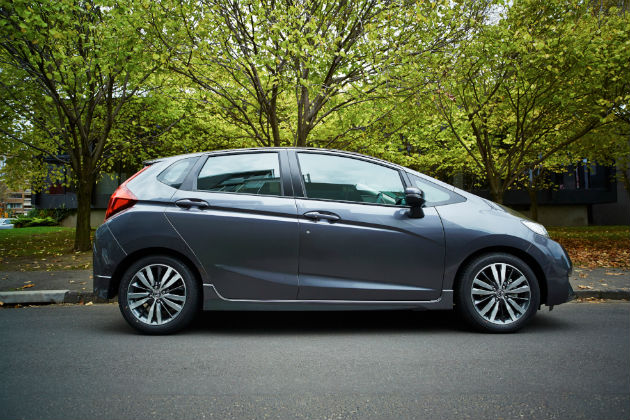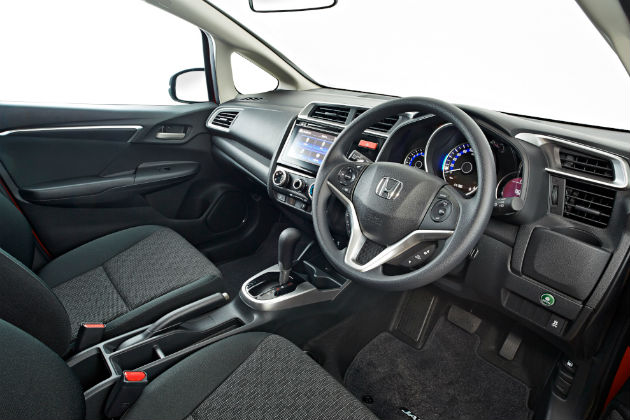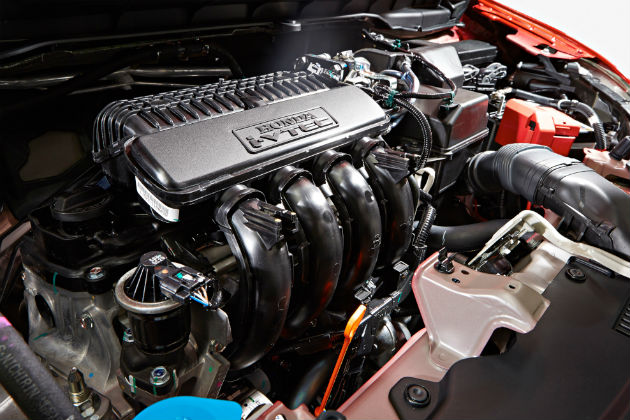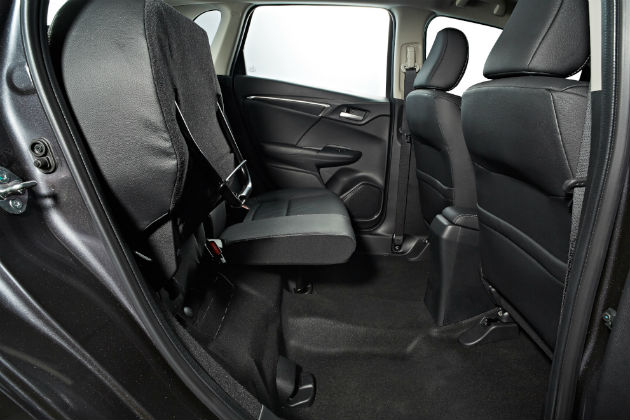7 August, 2014 By: Alex Forrest
When Honda launched its new Jazz last week, they employed an actor who fitted the car’s target market to tell us why she loved it.
The actor was posing as a 29 year old female named Laura who worked in retail.
Given the number of actors who work in retail and hospitality, there was probably more truth to this than Honda’s marketing folk intended.

She said the car’s main attractions were its practicality including the Jazz’s renowned “magic” folding seats, the car’s ability to connect with mobile devices and its sporty design inside and out.
These could well be seen as key factors of differentiation from its competition, particularly those cleverly folding seats which have been a hallmark of the Jazz in recent years.
However, it’s also particularly telling that in a market segment such as this where safety credentials, driving dynamics and refinement haven’t always been great, even these are now givens.
According to Honda’s marketing folk at least, the Jazz’s target market will be assuming these critical factors will already be at an acceptable level, and the nice-to-haves will be in the areas of looks, versatility and smartphone-friendliness.
Small, but grown up
That the light car segment has come to this type of prioritising is really a comment on its maturity.
Gone are the days when light cars were little more than motorised tin cans, and the market’s expectations of them have moved on as well.
Indeed, this third generation Jazz does proffer some important improvements over its predecessor, especially in the areas of safety equipment and the quality of the interior.
For example, a reversing camera is standard across the range – impressive for a light car with a retail price from $14,990. That camera also has a multi-angle function, meaning the camera can show a top view, normal view or wide view when the transmission is in reverse.

The Jazz also has an emergency stop signal, meaning that if the driver brakes hard from speeds of more than 60kmh, the brake lights will flash rapidly to warn the driver behind of the possible need to take evasive action.
The Jazz also gets six airbags as standard, though it is yet to receive a safety rating from ANCAP.
New motion-adaptive power steering
Also new to the Jazz is its Motion-Adaptive Electric Power Steering, which in slippery road conditions automatically initiates steering inputs aimed at prompting the driver to steer in the correct direction.
Thankfully, we didn’t have to try out that feature at the launch, but did find that fast steering inputs at parking speeds could leave the electric motor struggling to keep up, which at these speeds wasn’t a major concern.
Drivetrain
The old Jazz’s 1.3-litre engine is now gone, and the new model now has the 1.5-litre engine across the range. Power and torque of the 1.5 have stayed the same, at 88kW and 145Nm respectively.
As we are increasingly beginning to see on other brands, the Jazz’s CVT gearbox now also has an integrated torque converter, which helps remove some of the prolonged engine drone that can be caused by some conventional CVTs.
All CVT-equipped Jazzes come with paddle shifters if you feel the need to step through the seven preset shift points.

Those magic seats
The Jazz’s biggest asset and its key point of difference from the rest of the pack is its wildly versatile interior.
The Jazz’s so-called “magic” seats won’t grant you three wishes, but they’ll come close if you’re want to fit lots of stuff into a tiny car. The seats’ ability to fold up to accommodate tall objects is particularly good.
Honda also went to great pains to show us how flat the seats can fold compared to its competition.

Legroom and head room for rear passengers have been significantly expanded in the new Jazz, and sitting back there you can certainly feel it.
That said, the competition did excel in other areas, such as the Ford Fiesta, which is a much more sporty drive.
The Jazz’s smartphone integration (such as mirroring the phone screen on the car’s dashboard screen) is also currently limited to the iPhone 5 or 5S, with android integration coming soon. Basic Bluetooth connectivity works with both iOS and android.
Overall, the Jazz continues its well-earned reputation for interior versatility and modern design inside and out. It has good safety credentials and while not particularly sporty to drive, it’s sharp enough dynamically and has plenty of standard kit for the price.
| Price driveaway (as tested): |
$14,990 |
|---|---|
| Engine: | 1.5-litre petrol |
| Gearbox: |
5-speed manual or CVT |
| Power: | 88kW @ 6600rpm |
| Torque: | 145Nm @ 4600rpm |
| Claimed fuel economy: | 5.8L/100km (auto); 6.2L/100km (manual) |
| Kerb weight: |
1095kg (auto) |
| Connectivity: |
Bluetooth phone & audio, AUX & USB inputs |
| Spare tyre: |
Space saver |
| ANCAP Rating: | 5 stars |
| CO2 Emissions: | 135g/km |
This vehicle in the above specification qualifies for RAC's Less Emissions Mission rewards.
